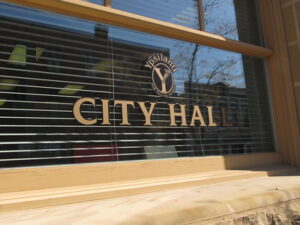Voters in Long Beach, CA will decide on Tuesday whether they want to authorize nearly $1B in bonds for capital improvement projects at Long Beach City College. If $1B sounds like a lot of money, it is. And if you think $1B ought to cover some big projects, you’re right.
Among the plans on LBCC’s wish list are updated classrooms for students who intend to transfer to four-year universities; health and wellness improvements, including updates to athletics spaces, the creation of mental health facilities, drinking water improvements, sewer improvements, and mold and asbestos abatement in LBCC’s older buildings.
Also on the list is Americans with Disabilities Act compliance; improvements to reduce utilities costs; student housing construction; services for returning veterans; a new horticulture complex; construction trades classrooms; a middle college; a new nursing building; a new childcare center; a new library; parking lot improvements; and electric vehicle charging stations.
Some of LBCC’s buildings are 75 years old, and they’re at the end of their useful lives. Without extensive renovations or outright rebuilds, the buildings will cease being useful for classroom operations.
The price tag for these improvements shouldn’t surprise anyone who’s been paying attention to the cost of facilities neglect on college campuses. Maintaining and renovating facilities absorb a lot of resources. NOT maintaining and renovating facilities is even more costly.
LBCC’s billion-dollar ask demonstrates why these kinds of projects cannot and should not be shopped off onto district students. The bond issue will take 35 years to repay and will likely incur costs (with interest) of about $1.9B. If these project costs were left to LBCC students to pay, the rise in tuition and fees would be astronomical.
LBCC has about 15,500 FTE students and delivered about 462,800 credit hours of instruction last year. If the number of credit hours of instruction were held constant over the next 35 years, LBCC would deliver about 16, 200,000 hours of credit instruction. The total cost of the bond repayment is projected to be about $1.9B. To repay the bonds alone, LBCC would need to raise per-credit-hour costs by more than $117 for the duration of the bond repayment period.
That’s nearly $120 per credit hour for the next 35 years to pay for the cost of these capital improvement projects. In the likely event that LBCC’s 15,500 FTE students can’t afford an additional $3,500 per year on top of what they already pay (and on top of additional increases to address LBCC’s rising operating costs), LBCC’s enrollment would drop and the remaining students would need to pay even more to sustain the cost of LBCC’s billion-dollar bond debt.
In reality, a community college is a community resource. The community authorized it and built it, so the community should maintain it and improve it over time. That means paying for capital improvement costs.
Passing capital improvement costs to students is the cost model that most four-year universities use, and it is why university education has become unaffordable. Community colleges shouldn’t make the same mistake, especially when they have a mechanism to seek taxpayer support for capital investments.
Continued reliance on students to pay a community college’s capital improvement costs will likely result in the school’s closure when its students can no longer afford the stiff costs of construction on campus. Unnecessarily using a school’s General Fund to guarantee repayment of decades-long bond issues is foolish and endangers the long-term financial health of the institution.
Photo Credit: Thomas Hawk , via Flickr























